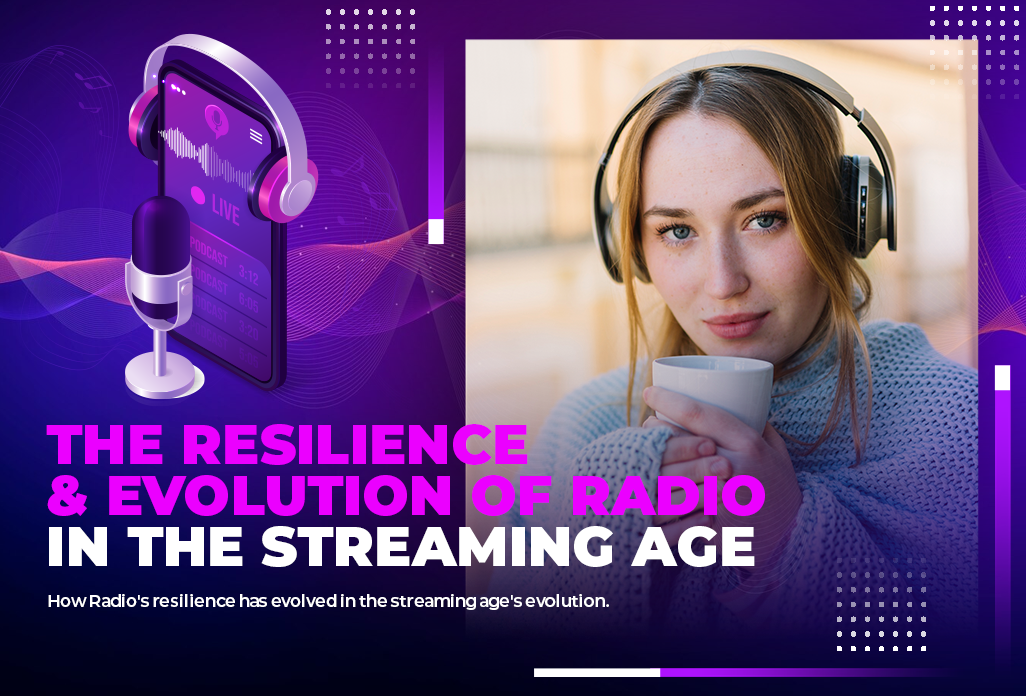The Resilience and Evolution of Radio in the Streaming Age

As digital streaming platforms and on-demand content have disrupted traditional media landscapes, one stalwart has demonstrated remarkable staying power: radio. Defying predictions of its impending obsolescence, radio has not only endured but actively evolved to remain relevant in the modern entertainment ecosystem. This resilience can be attributed to radio’s unique strengths and its ability to adapt to changing consumer behaviors and technological advancements.
The Enduring Appeal of Radio
At its core, radio’s appeal lies in its curated lean-back listening experience and deep community connections. Unlike streaming’s algorithm-driven playlists, local radio stations offer programming tailored to the interests and cultures of their respective regions. This localized approach fosters a sense of belonging and resonance with audiences that streaming struggles to replicate fully.
Moreover, radio remains the dominant in-car audio entertainment source, with over 80% of in-car listening still occurring on AM/FM radio. As commuting routines persist, this captive audience provides radio with a consistent listenership base and underscores its continued relevance in the modern age.
While audiences have diversified across platforms, radio maintains a strong foothold. According to Edison Research’s Infinite Dial 2022 study, AM/FM radio reaches 88% of the U.S. population aged 12+ every week, with 57% listening daily – only slightly lower than a decade ago.
Embracing Digital Innovation
Rather than being displaced by streaming, radio has actively embraced digital innovation to complement its traditional offerings and expand its reach. Major radio conglomerates like iHeartMedia and Audacy have invested substantially in streaming platforms, podcasts, and on-demand content to diversify revenue streams.
Broadcast radio programming is now syndicated and simulcast on streaming services and station apps, while emerging hybrid models blend live radio elements with on-demand streaming capabilities on unified platforms. The incorporation of voice interfaces, smart speakers, and connected car integrations further extends radio’s accessibility across new digital surfaces.
This digital evolution has allowed radio to capitalize on its inherent strengths – live, personality-driven content and localized community engagement – while tapping into the convenience and multi-platform accessibility that modern audiences demand.
Redefining the Business Model
Historically, radio’s relationship with the music industry has been contentious due to the issue of royalty payments. In the U.S., terrestrial AM/FM stations are exempt from compensating artists and labels for public performance of sound recordings, unlike streaming services and satellite radio which do pay such royalties.
This exemption, rooted in the 1909 Copyright Act, has sparked debates, with labels arguing for performance royalties while radio fiercely opposes new payment structures that could destabilize its business model.
As streaming platforms’ role has shifted from hit-making to prolonging the lifecycle of songs, some major labels have reduced radio promotion efforts accordingly. However, radio remains pivotal for breaking hits in genres and demographics where streaming has not fully penetrated.
To maintain its cost-effective business model in this evolving landscape, radio has diversified revenue streams through live events, brand integrations, and digital advertising offerings. Simultaneously, unethical “payola” practices involving undisclosed payments for song placements persist as an industry challenge.
Embracing Transformative Technologies
As radio adapts to the digital age, it is also harnessing transformative technologies like artificial intelligence (AI) to enhance productivity and operational efficiency. AI tools are automating labor-intensive tasks like script writing, creating artificial voices, playlisting, scheduling, and streamlining operations previously handled manually.
While some view AI as a potential job threat, industry leaders argue it will augment human talent, freeing up resources to create more compelling listener experiences that bridge the gap between traditional radio and digital platforms.
Looking Ahead
The resilience and evolution of radio in the Streaming Age remains intertwined with the broader evolution of the music industry and consumer behavior. Potential paths include syndicating radio programming to streaming services, creating simulated radio stations with limited on-demand options, or further hybridization of live and on-demand content.
However, the absence of compensation for recordings played on terrestrial radio persists as a significant point of contention with labels and artists. Resolving this issue may reshape radio’s business dynamics and relationship with the music industry.
Ultimately, radio has proven its resilience by adapting to digital disruption while retaining its core appeal – curated live programming, authentic personalities, and deep community connections. By harnessing digital innovation, embracing new revenue models, and leveraging transformative technologies, radio has cemented its role as a complementary and enduring part of the modern audio entertainment landscape.
